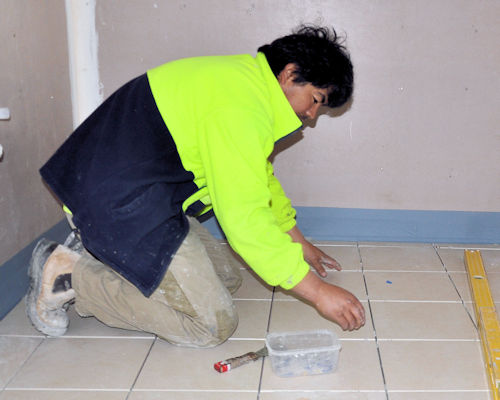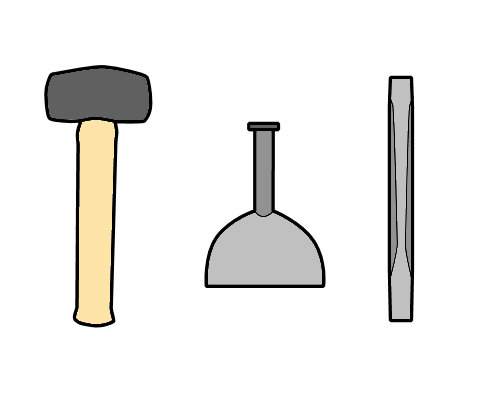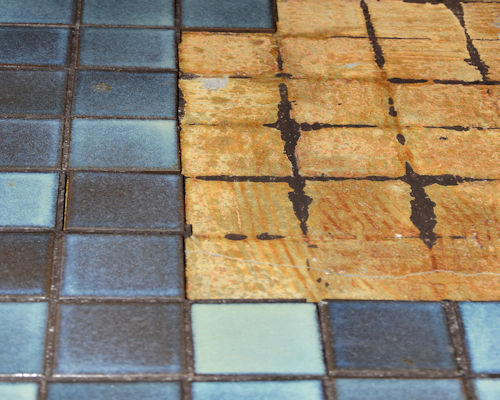Removing floor tiles
 Audio for slide 1 (mp3 |6|KB)
Audio for slide 1 (mp3 |6|KB)
The term 'floor tiles' generally refers to hard tiles made from mineral products, such as ceramic, slate and marble.
It doesn't normally include carpet tiles or resilient tiles, which we've already discussed in previous lessons.
Floor tiles are often fixed in position with adhesive, but they can also be laid on a mortar bed, particularly when the substrate is concrete.

 Audio for slide 3 (mp3 |6|KB)
Audio for slide 3 (mp3 |6|KB)
Floor tiles are removed in a similar way as for parquetry (see the previous lesson).
The main difference is that if you're using hand tools, you'll need a lump hammer and cold chisel rather than claw hammer and woodworking chisel, since you're basically working with masonry products.
For large areas, use a jackhammer, chisel scraper or ride-on floor scraper.


Learning activity
Audio 4 (mp3 |6|KB)We've indicated in this lesson that hard tiles are made from mineral products, which make them brittle and liable to break with sharp edges when they're lifted from the floor.
They're also often bedded down on a mortar base, which can be very dusty when it breaks up.
Let's say you were removing ceramic tiles with a jackhammer or chisel scraper. What personal protective equipment would you need to wear for this task, over and above your normal worksite PPE (such as hi-vis shirt and safety boots)?
Include the PPE needed while you're using the power tools as well as while you're shovelling up and disposing of the rubble.






